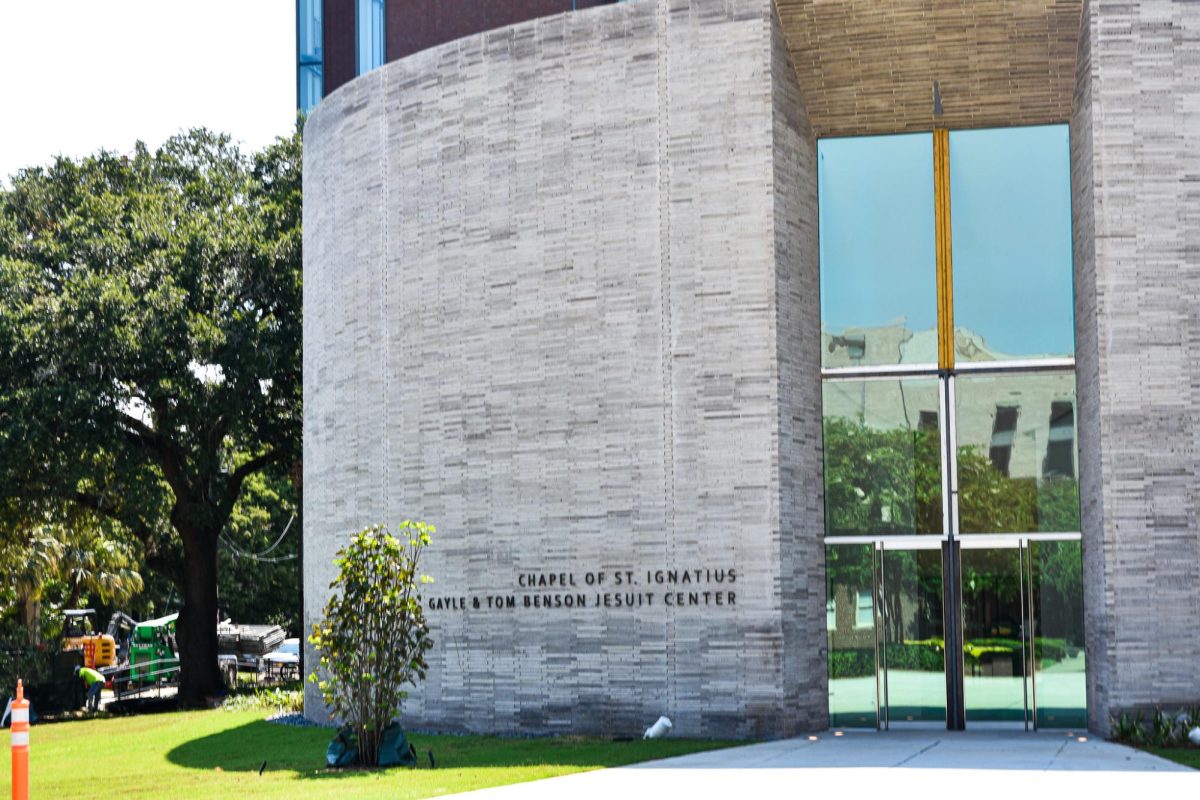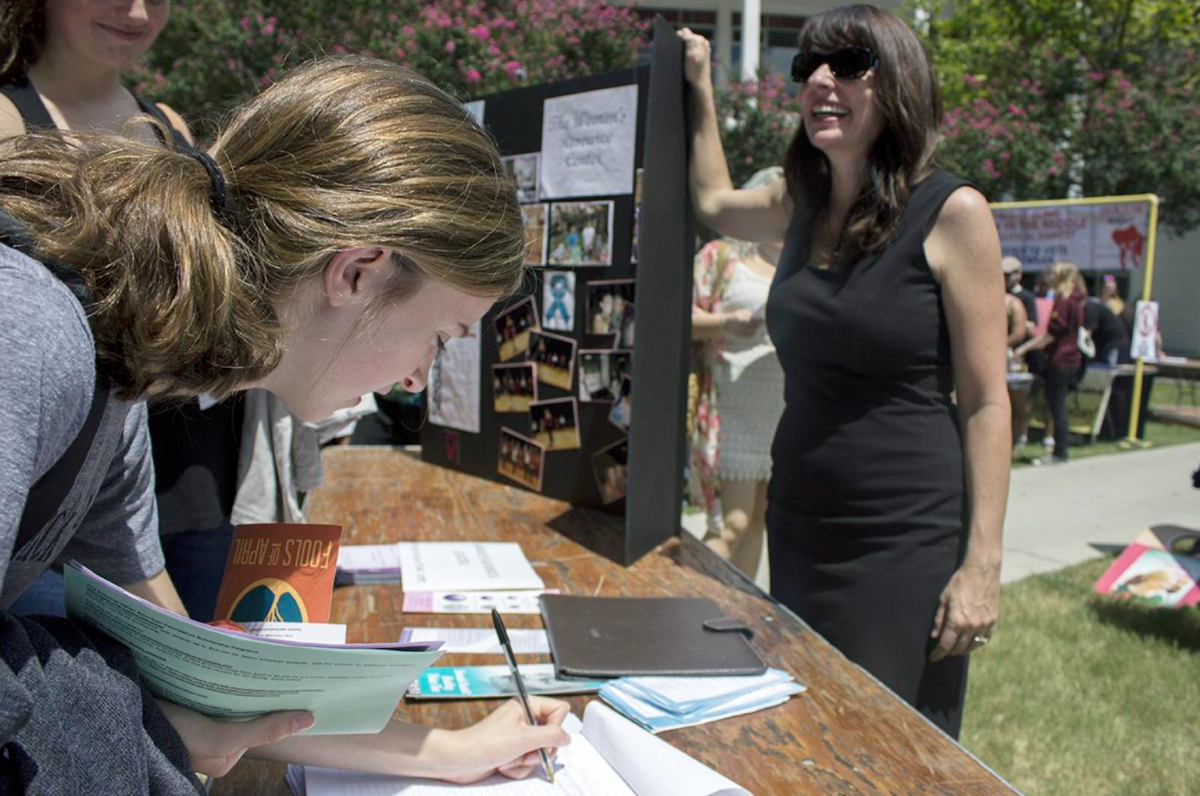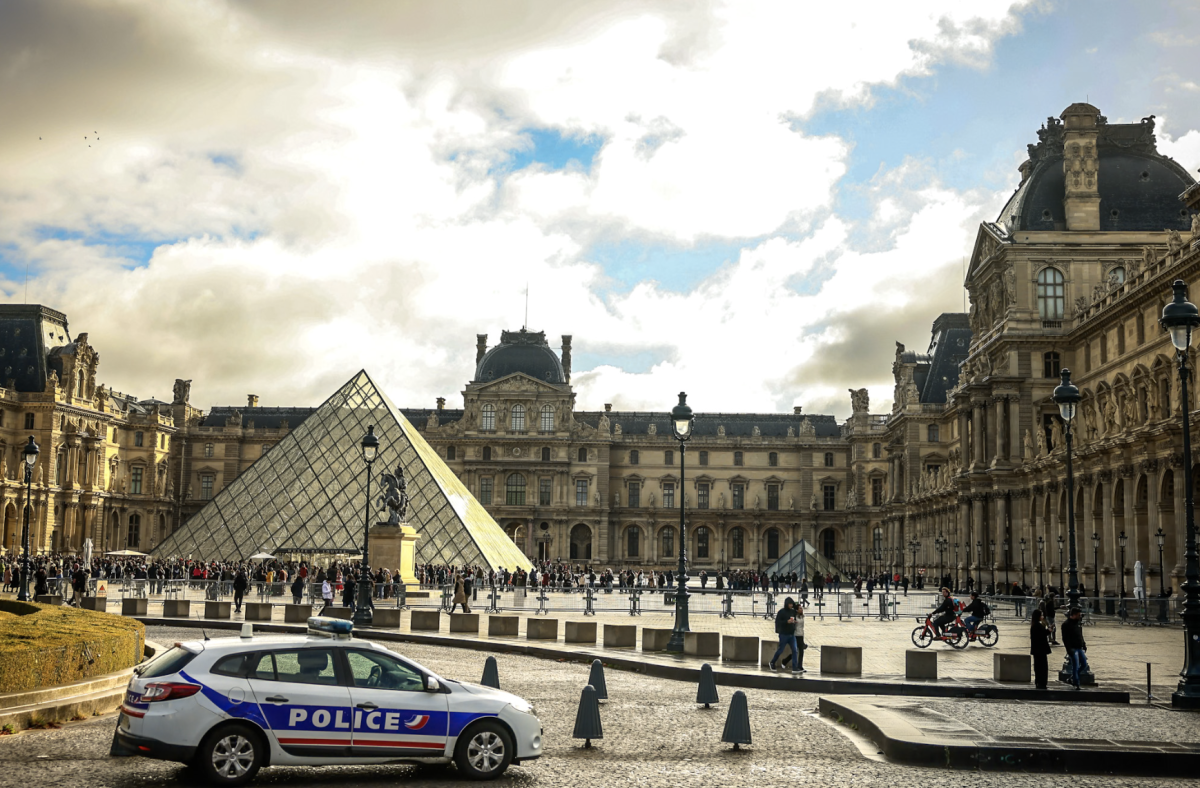Arriving at Loyola University in 2021, I was aware of a new chapel that was soon to be built. As a Catholic student, I was very excited for this new addition to the campus due to what I felt was a lack of Catholic presence on campus.
In my time as an undergrad student, I have been involved with Catholic Studies and was granted the opportunity in the Fall of 2023 to study abroad in Rome at the leading Jesuit institution for higher education, the Pontifical Gregorian University. Here I took classes of philosophy, theology, and sacred spaces.
In my course on sacred spaces taught by Dr. Yvonne Dohna Schlobitten, who specializes in “sacred seeing,” I examined art throughout aspects of the Church and how to find the Divine in sacred spaces. It is a simple task to do this when in Rome. There are roughly 900 churches in Rome, some as grand and ornate as St. Peter’s Basilica in the Vatican and some as modern as Church of God the Merciful Father. The church in Rome that resonated with me the most was Chiesa del Gesù. Deemed the mother church of the Society of Jesus, Chiesa del Gesù embodies the notion of Ignatian Spirituality. With its ornate artwork depicting the Holy Name of Jesus throughout the Church, Chiesa del Gesù showcases a ceiling painting in which the gap between the world and Heaven is bridged. The depth of the painting creates a sense that the ceiling of the church is open and a gateway to the Divine. It is by the artwork and use of senses that this is a space in which we as man are able to connect to the Divine. Chiesa del Gesù is a great place of reverence and prayer.
Now one may be reading this and go, “Well, does he expect Loyola to recreate such a church as Chiesa del Gesù?” The answer to that is of course not. I don’t expect Loyola to build a structure such as Holy Name of Jesus Church either. However, it is important in the designing of a chapel or church to take into consideration the things that can lead people closer to the Divine. It is crucial that a sacred space must lead to the Divine through the senses. Rather than having to search for God in a space, we must be able to rely on images and symbols which guide our prayer.
I must say that beautiful things are occurring in the newly constructed Chapel of St. Ignatius. I have attended many masses and hours of adoration in which the Lord God is fully present in our midst. The community that gathers together at the altar is one of love and charity. However, when walking into the chapel alone, I feel a sense of abandonment. The emptiness can bring a sense of desolation in which St. Ignatius fell into the cave in Manresa.
I look to the statue of my mother, Mary, who looks as though she is troubled and afraid of God’s plan of the Incarnation, instead of her common depiction as affirmed in God’s Will as Queen of Heaven. This uneasy Mary differs from the distraught Mary of the Pietà. In Michelangelo’s famous Pietà, we see a saddened Mary holding her dead Son. This depiction brings a sense of sorrow to our own spiritual understanding of Christ’s Passion in which we eventually rejoice at the Resurrection of our Lord Jesus Christ. However, the Mary present in the chapel does not convey the joy that comes with the Incarnation, but rather shows the fear of which Mary may have felt.
In my own times of desolation and depression, I have tended to call upon Mary’s intercession and guidance. She has played a substantial role in my spiritual growth throughout the recent years, and the statue that stands before me does not confirm the confidence that Mary surely portrays.
There are also practical critiques to be offered on the new chapel.
(1) The hard surfaces in which the chapel is made lends itself to the space becoming an echo chamber. If you were to go to the restroom during Adoration of the Blessed Sacrament, in which the chapel is often silent, one can hear every sound of the door, toilet flush, and hand dryer even when the doors to the chapel are shut. This brings concerns to the confessional which is attached to the exterior wall of the chapel. The Sacrament of Reconciliation is meant to be a private confession of sins in which only the priest, yourself, and God is present and attentive. If someone utilizes the confessional, it is likely that those in the chapel are able to hear what is being said.
(2) The tabernacle to be installed is a rotating obelisk-like structure in which a large block is to be removed from the top to unlock it. This is impractical for a priest trying to retrieve the Blessed Sacrament from the tabernacle. How must he replace the block with the Eucharist in his hand while also having to rotate the tabernacle shut?
(3) The sanctuary lamp that hangs above the tabernacle is meant to indicate whether the Blessed Sacrament resides in the tabernacle. The lamp is hung in a fashion that it is impossible to see whether it is lit from across the chapel.
(4) The Roman numerals that surround the exterior wall of the chapel are meant to act as indicators of the Stations of the Cross, however, the symbol of the cross is not present. Instead of the stations, we simply have Roman numerals on the ground.
(5) The chairs and kneelers are not ideal. The chairs scrape on the floor, causing the noise to echo throughout the chapel everytime the congregation takes their seats during the Mass. During the most reverent part of the Mass, the consecration of the bread and wine, the congregation kneels. Instead of maintaining silence during this, there is a loud commotion of kneelers being moved and shuffled around for people to kneel.
(6) Uplighting only works for museums. During Holy Hour, it is common for someone to walk along the edge of the chapel which causes a shadow to project onto the wall due to the uplighting found in the floor.
Elements of the chapel that were meant to bring simplicity and aesthetic appeal have turned into distractions. One could say that they are distracted by an ornate church, but I argue that the simplistic approach is much more distracting. I am grateful for the new chapel and its mission to bring Catholic identity to the center of Loyola’s campus, but I wish that some of these practical and spiritual elements would have been better assessed at the drawing board.









John Cunningham, S.J. • Oct 25, 2024 at 11:59 am
Michael, thank you for your assessment of the church. The chapel was visited this week by Betty-Ann Hickey, Associate Director of the Office of Worship of the Archdiocese. Other than a few suggestive changes, our chapel was celebrated as a contemporary design seen in many parts of this country and world, including Rome,Italy. And yes, the tabernacle is being redesigned in mind of the flaws you highlighted, but will remain in its monolithic style. Such a style tabernacle can be seen in other churches in the Archdiocese of New Orleans.
I invite you and the whole Loyola community to a panel discussion about the chapel on November 11 @ 7 PM in the chapel. The panel will include Trey Trajan, acclaimed architect, Father Greg Waldrop, SJ, art historian and advisor to the chapel’s design, as well as Marchita Mauch, an emeritus professor of art history and liturgical consultant.
All three will enlighten you, as well as the whole community, to the chapel’s many beautiful features.